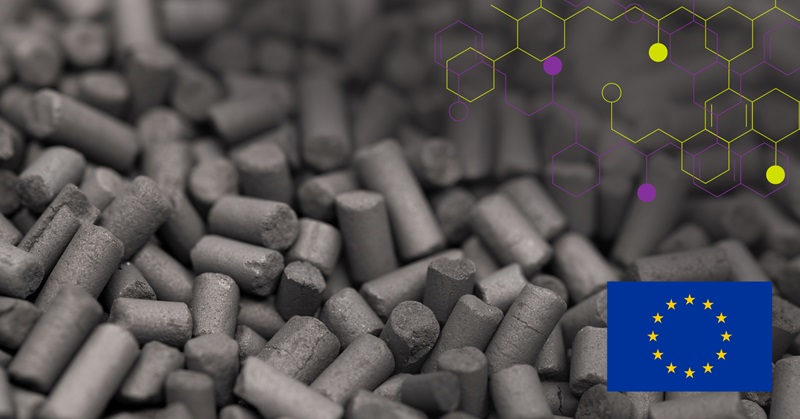Wood impregnation in Europe
The Nordic wood preserving industry produces around 2.1 million m³ of impregnated wood per year, which is about one third of the total supply of pressure-treated wood in Europe.
Impregnation usually takes place using water-borne copper salts by different pressure and/or vacuum techniques. Oil-borne creosote, on the other hand, is used in situations where the product is used also underground and in contact with water and in constructions with specific load-carrying demand, for example, in poles and sleepers. There are also other chemicals, processes and techniques in use, such as the flow-coat technology common in Denmark.

The Nordic wood preserving industry relies on the standardized and optimized use of impregnating chemicals specified in the EU and Nordic standards. Important pre-conditions for production are quality control and regular and systematic maintenance of processes, as well as trained and motivated personnel. These pre-conditions are important also in view of the minimization of environmental impacts of the industry.
Since wood impregnating chemicals are classified as dangerous for the aquatic environment, and they are not or only slowly biodegradable, protection of surface waters, soil and groundwater and the minimization of accidental risks is an important environmental aspect in wood impregnation. Replacing hazardous chemicals with less hazardous ones and the minimization of use of chemicals when technically and economically possible are key environmental targets in the wood impregnation industry.
The most common wood preservation techniques in Nordics
The most typical wood preservation techniques in use in the Nordic countries are the Bethell process and its modifications used mainly in impregnation with metal oxides, the Rüping process used mainly in creosote impregnation and Royal process consisting of oil treatment and followed by drying.
Bethell is a treatment process where an aqueous solution of impregnant is applied using a vacuum and pressure cycle. The process is also called the full-cell method in which the purpose is to fill the wood cells with the impregnation agent in order to receive the highest possible amount of impregnant in the wood. The penetration of the impregnation agent is based on the vacuum created before the process. The Bethell process begins with a preliminary vacuum, which creates a vacuum inside the wood also. The vacuum is maintained and injection of the impregnation agent begins. When the pressure cylinder is full of the impregnation agent the vacuum is removed and overpressure is created. The overpressure, usually above 1,200 kPa, makes the impregnation agent penetrate the wood. The time of overpressure varies from minutes to hours. After the overpressure period, normal pressure is restored. Finally a short vacuum is created to remove all excess impregnation agents from the wood. This prevents dripping when the wood packages are stored.
Rüping process is the most common method of impregnating wood with creosote under pressure. In the process, there is no initial vacuum such as in the Bethell process. The Rüping process begins by creating a preliminary pressure of 100–700 kPa. During this period, air is compressed into wood cells, after which the pressure cylinder is filled with an impregnation agent and the air in the wood cells is compressed. After impregnation, the pressure is returned to normal. In this stage the air left in the wood cells starts to expel the excess impregnation fluid. The process is completed with a vacuum, during which all excess impregnation agent is drawn from the wood. This prevents dripping during the storage stage. The final product is wood that has the cell walls thoroughly treated.
Royal process is a two stage treatment process which incorporates two independent systems to create a stabilised pre-finished product with enhanced performance properties for use in various external applications, reducing the need for hand application of a coating and costly short term maintenance. It combines an oil treatment with linseed oil with the subsequent drying of impregnated wood. The autoclave with the wood packet is kept under vacuum conditions and filled with hot linseed oil. The wood is dried and the circulating oil is sucked into the wood. The absorption quantity is thus controlled through the vacuum. The linseed oil seals the top surface of the wood and improves dimensional stability through less moisture absorption. The fields of application are, e.g. wooden houses, playground equipment, terrace paneling, exterior panelling, protection against noise and for privacy, balcony panelling, window and door elements and carports.
By impregnating the wood with linseed-based oil like AlgolinTM, the wood is provided with a very long lasting water-repellent quality. At the same time, the wood is dried artificially in the process. The direct addition of pigment to the Royal oil enables the wood to be dyed in various colour tones. The outstanding features of Royal-impregnated wood are its effective protection, lasting water-repellent finish and colouring, combined with a high level of dimensional stability. All this makes it an especially high-quality, long-lasting product.
AlgolinTM is Algol Chemicals’ own, linseed oil based product for the Royal process. Thanks to high quality raw materials, AlgolinTM represents a very consistent wood impregnant.


